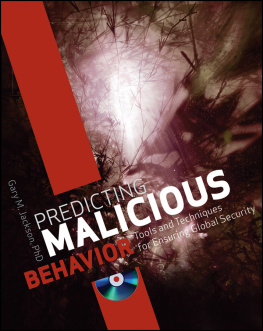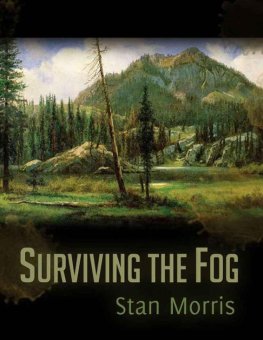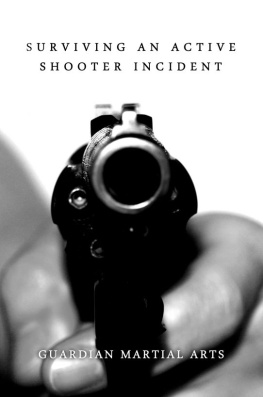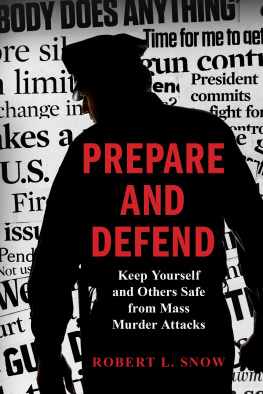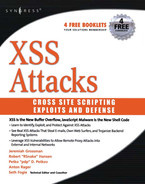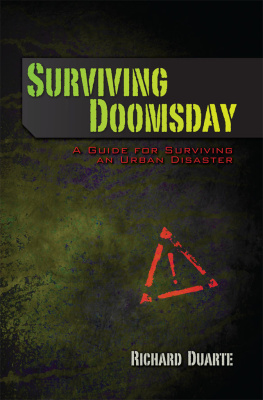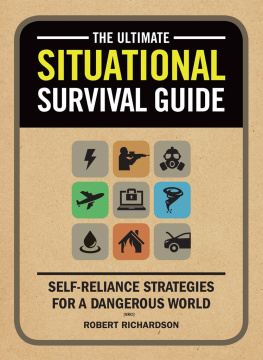About the Author
Gary M. Jackson , PhD , is a behavioral psychologist who is currently president and CEO of ANBECO, LLC. Dr. Jacksons career has spanned academia as a professor, director of research and development and treatment development in various clinical settings, research psychologist within the U.S. Secret Service Intelligence Division, operational intelligence officer and chief of three advanced technology branches within the Central Intelligence Agency, vice president and director of research and development for a major psychological test development company, Director of the Center for the Advancement of Intelligent Systems (CAIS) for the American Institutes for Research, founding president and CEO of Psynapse Technologies in Washington, DC, and chief scientist at SAIC and Leidos. He has also authored several books, including Predicting Malicious Behavior: Tools and Techniques to Ensure Global Security (2012). You can visit his website at massvictim.com, or follow him on twitter at @DrJacksongm.

Surviving Mass
Victim Attacks
All statements of fact, opinion, or analysis expressed are those of the author and do not reflect the official positions or views of the U.S. Government. Nothing in the contents should be construed as asserting or implying U.S. Government authentication of information or endorsement of the authors views. This material has been reviewed solely for classification.
Published by Rowman & Littlefield
A wholly owned subsidiary of The Rowman & Littlefield Publishing Group, Inc.
4501 Forbes Boulevard, Suite 200, Lanham, Maryland 20706
www.rowman.com
Unit A, Whitacre Mews, 2634 Stannary Street, London SE11 4AB
Copyright 2018 by Gary M. Jackson
All rights reserved . No part of this book may be reproduced in any form or by any electronic or mechanical means, including information storage and retrieval systems, without written permission from the publisher, except by a reviewer who may quote passages in a review.
British Library Cataloguing in Publication Information Available
Library of Congress Cataloging-in-Publication Data
Names: Jackson, Gary M., author.
Title: Surviving mass victim attacks : what to do when the unthinkable happens / Gary Jackson.
Description: Lanham : Rowman & Littlefield, [2018] | Includes bibliographical references and index.
Identifiers: LCCN 2018006801 (print) | LCCN 2018008025 (ebook) | ISBN 9781538110881 (Electronic) | ISBN 9781538110874 (cloth : alk. paper)
Subjects: LCSH: Violent crimesPrevention. | Mass murderPrevention. | TerrorismPrevention. | Self-defense. | Self-preservation.
Classification: LCC HV7431 (ebook) | LCC HV7431.J325 2018 (print) | DDC 613.6/9dc23
LC record available at https://lccn.loc.gov/2018006801
The paper used in this publication meets the minimum requirements of American National Standard for Information SciencesPermanence of Paper for Printed Library Materials, ANSI/NISO Z39.48-1992.
Printed in the United States of America
Introduction
M ass Victim Attacks are surprise attacks that kill multiple innocent people simultaneously. It is a growing worldwide problem. Mass victim attacks are committed by diverse types of attackers noted by different motivations. For the purpose of this book, I define a mass victim attack in the following manner:
A mass victim attack is defined as a planned individual or multiple perpetrator violent assault against a group of people, using a single, multiple, or improvised set of weapons with the end result being the deaths of three or more innocent victims.
In the United States we have: (1) international terrorism, (2) domestic terrorism, (3) self-radicalized terrorism, (4) attackers with mental health issues, and (5) those attackers motivated by hate/bias. Although there are motivation differences, all mass victim attackers have one thing in common: They all attack multiple innocent people by surprise, with no mercy, and with the objective of slaughtering as many as possible in the shortest amount of time.
Mass victim attackers are dedicated to their killing plansso much so that they are prepared to be killed or to commit suicide. I chose the term mass victim attacks because of the focus on the victim. We tend to think of those attacked as either being killed or wounded. However, there are other ways of being a survivor victim. Those who develop Acute Stress Disorder (ASD) or longer-term Post-Traumatic Stress Disorder (PTSD) because of being caught in a mass attack suffer as well. This book has a chapter devoted to such effects.
This book addresses the topic of mass attacks differently than other works. My focus is on victims and not a singular focus on the attackers. Analyzing all forms of mass victim attacks and attackers, I have focused on how people have survived such attacks. This first-time, universal focus on survival provides a guide for how to live through future mass victim attacks. Bombs, hijacked airliners used as weapons, semi-automatic guns and rifles, shotguns, knives, chemicals, biological agents, and even trucks driven into crowds have been used as weapons. Just as weapons have varied, the attackers themselves have been different.
The major feature of mass victim attacks is not weapons but the attackers intent to kill innocent victims in such a way as to strike fear into the hearts of all. Although all mass victim attacks are terrorizing, not all attacks are committed by terrorists. We must know the differences and similarities across attacker types. We must be better aware and understand the threat that we face today if we are to increase our chances of survival if the unthinkable happensthat is, being caught in a mass victim attack.
As an example, the deadliest international terrorist attack in the United States was the September 11, 2001, Al Qaeda attack in New York City and Washington, D.C. Forcefully gaining control of four airliners, 19 international terrorists worked as coordinated teams. Two hijacked airliners were flown into the World Trade Center Twin Towers, and one into the Pentagon. The fourth was a failure due to passengers fighting back, but it flew into the ground killing all aboard. The devastating attack resulted in 2,996 deaths with a minimum of 6,000 injuries.
Adam Lanza is an example of mental health issues. On December 14, 2012, 20-year-old Lanza shot his mother to death while she was sleeping and then drove five miles to Sandy Hook Elementary School in Newtown, Connecticut. Working alone, he was armed with two semi-automatic pistols, a rifle, and a shotgun. Forcefully entering the school by blowing out the windows adjacent to the front door of the school, he ended his own life about five minutes later. However, in that chaotic five minutes he managed to swiftly kill 20 children while they were hiding in vain under desks or in restrooms. All children were between the ages of 6 and 7, and all were shot multiple times. He also slaughtered six adults who were trying to protect the innocent children.
There are also mass victim attacks driven by hate and prejudice. On August 12, 2012, Wade Page armed himself with a semi-automatic pistol to kill Sikhs. Recognized as a white supremacist, his hate raged to the point of targeting a Sikh temple in Oak Creek, Wisconsin. He decided to act, approached the temple, and viciously killed six people and wounded four othersall members of the Sikh faith that he despised.
Self-radicalized terrorism is a more recent concern within the United States. Without being recruited, attackers choose to follow and model themselves after radical Islamic terrorism. Contact with an organized terrorist group could be present but is not necessary. All that is required is a self-proclaimed allegiance to the idolized group. Such attacks as the assault on the Pulse nightclub in Orlando, Florida, on June 12, 2016 (49 killed and 53 injured), and the attack on the Inland Regional Center in San Bernardino, California, on December 2, 2015 (14 killed and 23 injured), demonstrate the viciousness associated with these attacks.


